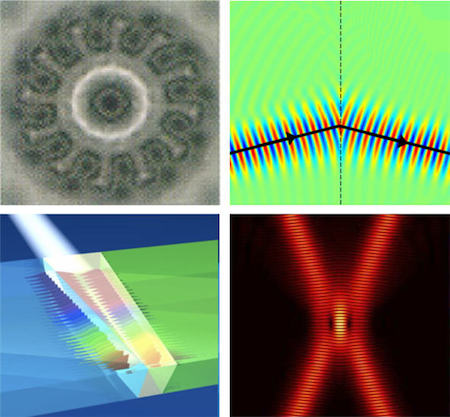Applied Optics, Laser Applications and Theory
Applied Optics includes study of the interaction of laser radiation with various materials, such as carbon fibre composites, stainless steel, archaeological and biological materials. This line of applied research often involves laser induced breakdown spectroscopy (LIBS), and new models are developed to capture transient plasma effects. This is undertaken in parallel with a long-standing research interest in the development of photovoltaics for solar cell applications. Thin films of novel materials, such as ternary and quaternary semiconductors, are produced with controlled properties.
Chemical vapour deposition is also employed, involving both semiconductor and metal oxide materials, to produce self-assembled three-dimensional photonic crystals. Investigations of the photonic properties of both bare and in-filled opals are then undertaken. This research led to the first reported inverse opal systems based on InP and GaP and that of a conducting inorganic medium (SnO2). Deposition of metal/metal oxide thin layers on a variety of substrates – to give enhanced properties, such as photo-activity – is a further area of applied work. Production and characterisation of novel solar cell materials and designs are included within this context.
Theoretical studies extend across a full range of laser applications, designs and devices – including world-leading nanostructure modelling in the design of optoelectronic devices such as semiconductor quantum dot solar cells. Further major research strengths lie in the modelling of metamaterials, surface waves, waveguides and magneto-optical effects.
Other research areas, such as theoretical photovoltaics and multi-frequency Raman generation, are supplemented with spatial soliton modelling activities concerning new contexts and regimes, such as fully-oblique wave propagation in patterned photonic materials and structures. A wide range of nonlinear materials are considered in both exact analytical and full numerical descriptions of propagating and refracting electromagnetic waves.
Further fundamental theoretical research involves the generation and propagation of novel laser light and new laser designs – such as the modelling of the spontaneous generation of optical fractals using nonlinear materials, designs of fractal lasers, and the potential applications of fractal waves. This is complemented by studies of general wave diffraction characteristics in various experimental geometries and contexts.
This is complemented by studies of general wave diffraction characteristics in various experimental geometries and contexts. Further details and publication downloads are available within the Complexity, Applied Nonlinear Science and Metamaterials group webpages.
